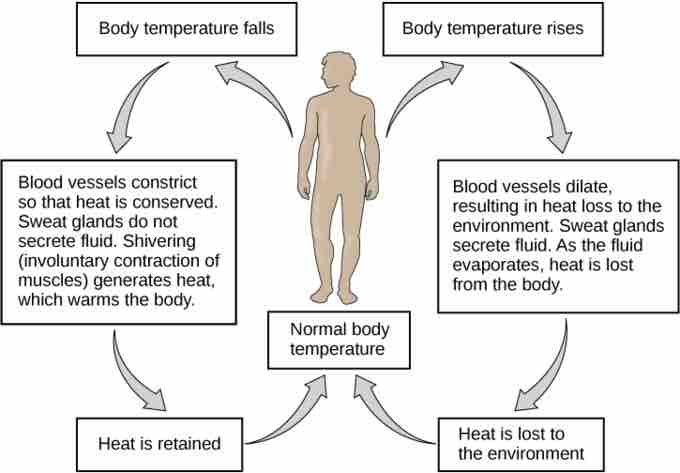Heat Conservation and Dissipation
Animals conserve or dissipate heat in a variety of ways. In certain climates, endothermic animals have some form of insulation, such as fur, fat, feathers, or some combination thereof. Animals with thick fur or feathers create an insulating layer of air between their skin and internal organs. Polar bears and seals live and swim in a subfreezing environment, yet they maintain a constant, warm, body temperature. The arctic fox uses its fluffy tail as extra insulation when it curls up to sleep in cold weather. Mammals have a residual effect from shivering and increased muscle activity: arrector pili muscles create "goose bumps," causing small hairs to stand up when the individual is cold; this has the intended effect of increasing body temperature. Mammals use layers of fat to achieve the same end; the loss of significant amounts of body fat will compromise an individual's ability to conserve heat.
Endotherms use their circulatory systems to help maintain body temperature. For example, vasodilation brings more blood and heat to the body surface, facilitating radiation and evaporative heat loss, which helps to cool the body. However, vasoconstriction reduces blood flow in peripheral blood vessels, forcing blood toward the core and the vital organs found there, conserving heat . Some animals have adaptions to their circulatory system that enable them to transfer heat from arteries to veins, thus, warming blood that returns to the heart. This is called a countercurrent heat exchange; it prevents the cold venous blood from cooling the heart and other internal organs. This adaption, which can be shut down in some animals to prevent overheating the internal organs, is found in many animals, including dolphins, sharks, bony fish, bees, and hummingbirds. In contrast, similar adaptations (as in dolphin flukes and elephant ears) can help cool endotherms when needed.

Control of body temperature
In endotherms, the circulatory system is used to help maintain body temperature, either by vasodilation or vasoconstriction.
Many animals, especially mammals, use metabolic waste heat as a heat source. When muscles are contracted, most of the energy from the ATP used in muscle actions is wasted energy that translates into heat. In cases of severe cold, a shivering reflex is activated that generates heat for the body. Many species also have a type of adipose tissue called brown fat that specializes in generating heat.
Ecothermic animals use changes in their behavior to help regulate body temperature. For example, a desert ectothermic animal may simply seek cooler areas during the hottest part of the day in the desert to keep from becoming too warm. The same animals may climb onto rocks to capture heat during a cold desert night. Some animals seek water to aid evaporation in cooling them, as seen with reptiles. Other ectotherms use group activity, such as the activity of bees to warm a hive to survive winter.